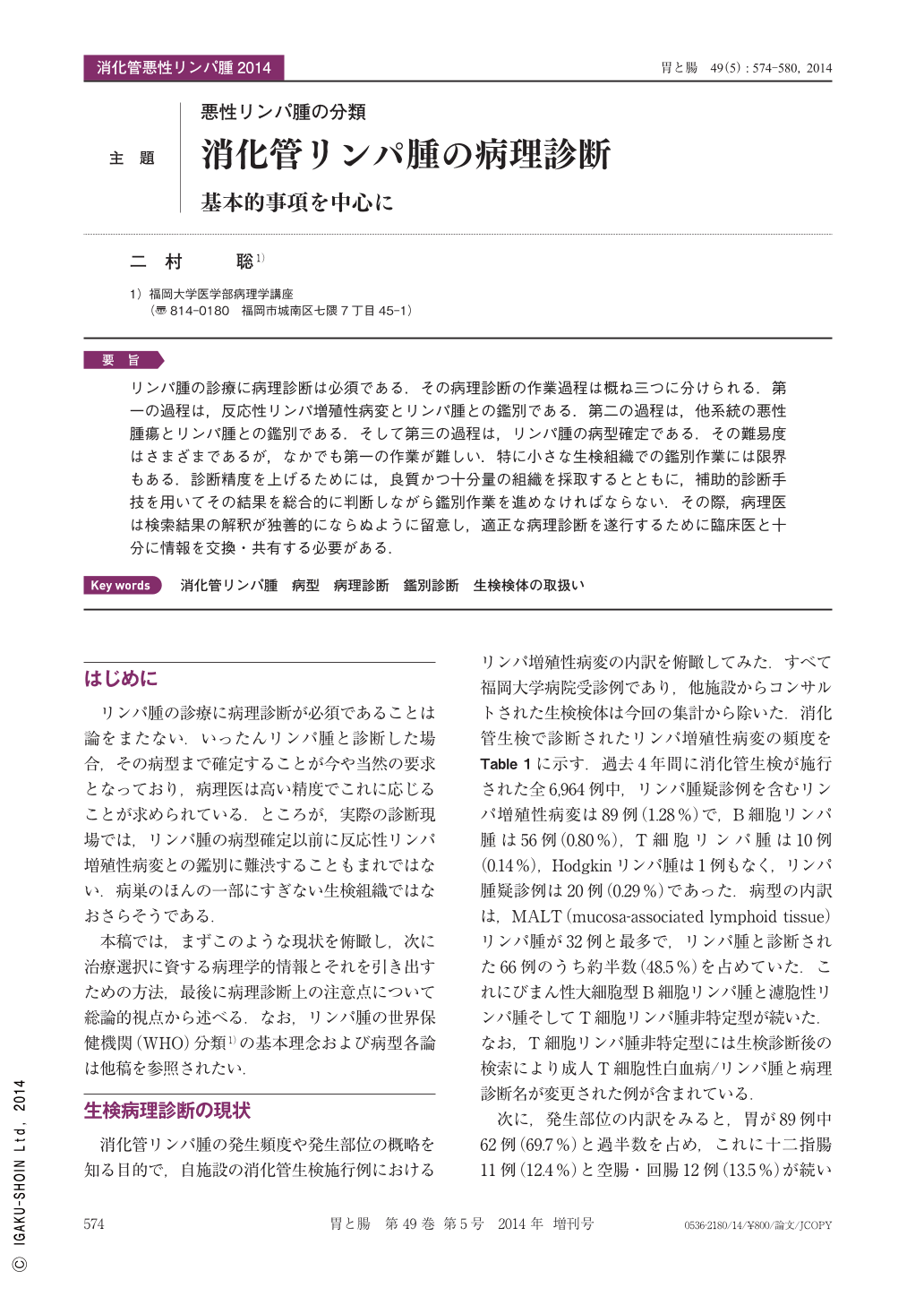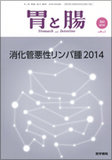Japanese
English
- 有料閲覧
- Abstract 文献概要
- 1ページ目 Look Inside
- 参考文献 Reference
- サイト内被引用 Cited by
リンパ腫の診療に病理診断は必須である.その病理診断の作業過程は概ね三つに分けられる.第一の過程は,反応性リンパ増殖性病変とリンパ腫との鑑別である.第二の過程は,他系統の悪性腫瘍とリンパ腫との鑑別である.そして第三の過程は,リンパ腫の病型確定である.その難易度はさまざまであるが,なかでも第一の作業が難しい.特に小さな生検組織での鑑別作業には限界もある.診断精度を上げるためには,良質かつ十分量の組織を採取するとともに,補助的診断手技を用いてその結果を総合的に判断しながら鑑別作業を進めなければならない.その際,病理医は検索結果の解釈が独善的にならぬように留意し,適正な病理診断を遂行するために臨床医と十分に情報を交換・共有する必要がある.
Pathological diagnosis plays an important role in the medical treatment of lymphoma. Pathological diagnosis is subclassified into three conventional thinking processes :(i)differential diagnosis between non-neoplastic lymphoproliferative lesions and lymphoma,(ii)differential diagnosis between other histological types of malignant neoplasm and lymphoma, and(iii)histological typing of the lymphoma. The first process is the most difficult, especially when biopsy specimens are small in size. On occasions, it may be necessary to request a second biopsy or perform endoscopic mucosal resection to enable a complete examination. Correlating morphological features with a clinical history and results of ancillary studies, such as immunohistochemistry and genetic analysis, may be helpful in differential diagnosis. Thus, close cooperation between the clinician and the pathologist is essential to maintain the quality of pathological diagnosis.

Copyright © 2014, Igaku-Shoin Ltd. All rights reserved.


